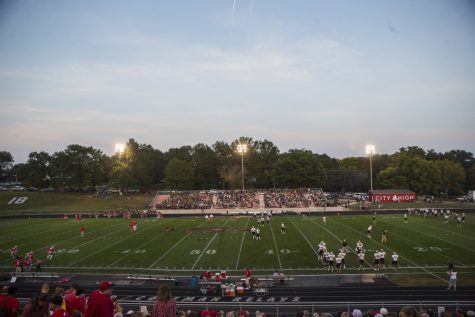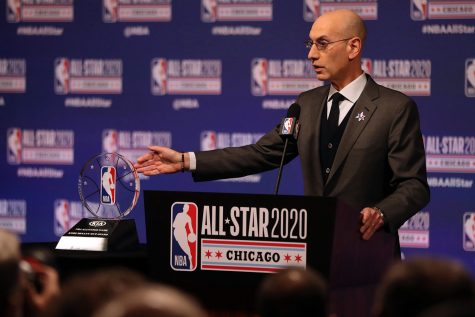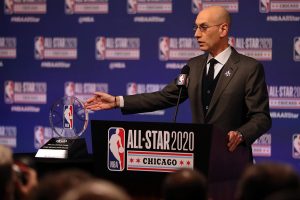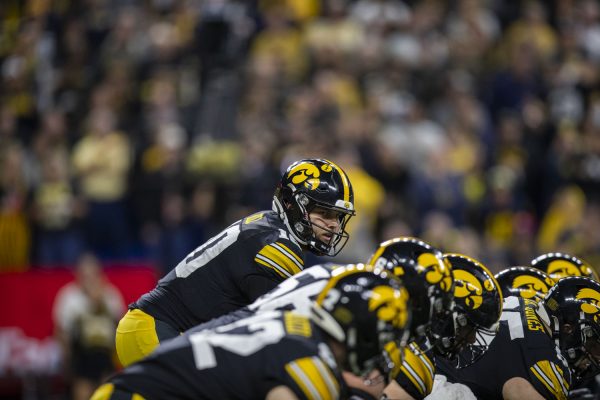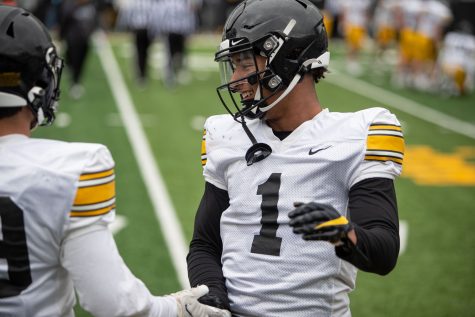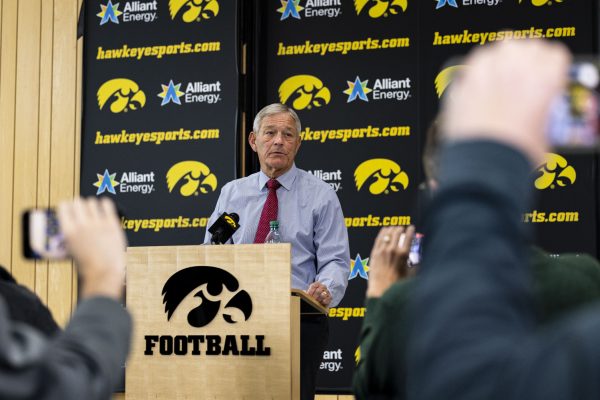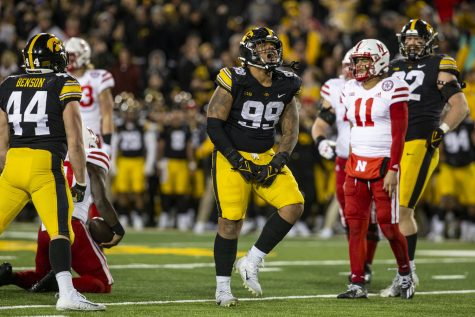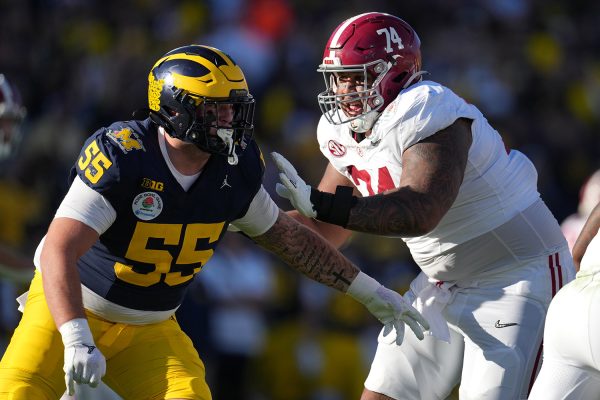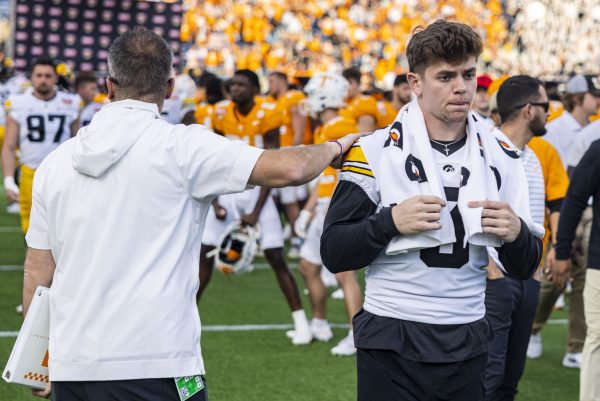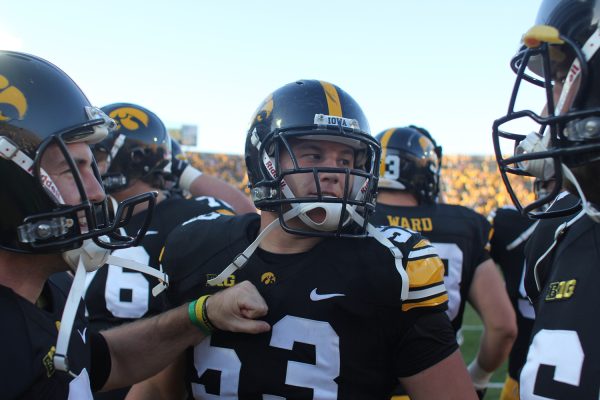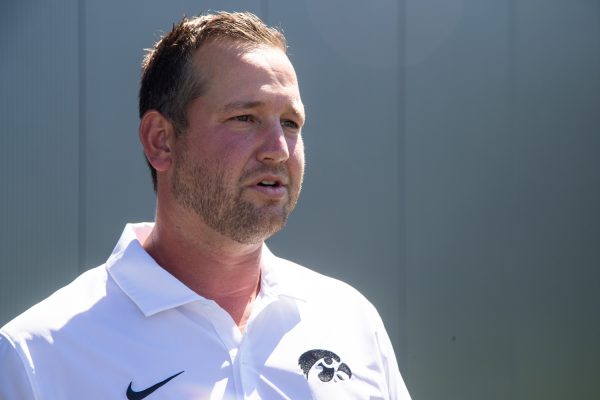Looking back at Iowa football’s 1918 game with no fans
In the middle of a pandemic and a World War, the Hawkeyes faced off against Coe College in a stadium that had been closed to the public.
Kinnick Stadium is seen fom the north end zone at Iowa Football Media Day on Friday, August 9, 2019.
August 5, 2020
With the football season still in question and no guarantee that fans will be allowed to attend games, Iowa football is experiencing a lot of firsts.
If the football team were to play in an empty stadium this year, however, it would not be the first time the Hawkeyes took the field with no students cheering them on from the student section and no fans chanting from the stands.
In October of 1918, World War I was nearing its final leg in Europe while a new issue was spreading throughout the home front.
The flu pandemic of 1918, also known as Spanish influenza, was killing Americans and others around the world at alarming rates. According to the Centers for Disease Control and Prevention, it is estimated that about 500 million people or one-third of the world’s population became infected with this virus. The number of deaths was estimated to be at least 50 million worldwide with about 675,000 occurring in the United States.
The Iowa football team was originally scheduled to play Northwestern on Oct. 12 of that year. Members of the Student Army Training Corps were encouraged to play, but that game was not to be played due to restrictions laid out by the war department.
“No games will be played in October which necessitate absence from the institution for a longer period than from noon to taps on Saturday,” The Lima Daily News reported on Oct. 4, 1918. “Schedules should be arranged as far as possible to include teams of nearby institutions, thereby taking the men away from their work no more than is necessary.”
At a meeting in Chicago a week before the game on the 12th, Iowa head coach Howard Jones and coaches from the other Big Ten institutions rearranged their schedules to comply with this and other new restrictions laid out by the war department. Jones scheduled a game with Coe College that week after it was confirmed that Northwestern would not be allowed to travel to Iowa Field.
As one of the Big Ten’s highest-ranked teams, the Hawkeyes were expected to win this matchup without much difficulty. That being said, Coe was also not a team that anybody expected to go out quietly.
“They will no doubt prove to be a worthy foe, for Coe has in the last few years turned out a team on par with the best elevens in the state,” The Daily Iowan reported on Oct. 8, 1918.
RELATED: New Big Ten football schedule structured to ‘maximize flexibility’
The Iowa City board of health had passed orders prohibiting public gatherings including sporting events on Oct. 5. However, the DI reported a day later that the university was not affected by these orders as they were under military administration.
The DI had reported three UI student deaths from Spanish influenza before the game was to take place.
At 3 p.m. on Oct. 12, 1918, the Iowa Hawkeyes took the field against Coe in front of a crowd made up only of men from the Student Army Training Corps.
“The contest had been called off, but early today the authorities decided that it might be played,” The Des Moines Register reported on Oct. 13.
The Hawkeyes won by a score of 27-0 in a game where Jones had subbed in nearly every player on his team over the course of the contest.
After a scoreless first quarter, Iowa put up 14 points in the second quarter, seven in the third, and six in the fourth. They were led by their running game and their offensive line play, The DI reported the next day.
The 1918 Iowa football team would go on to finish fourth in the Big Ten with a 6-2 record. The game against Northwestern would be rescheduled for November 23 of that year, and the Hawkeyes would win that matchup by a final score of 23-7.
Five more on-campus deaths due to Spanish influenza were reported a day after the game took place.




